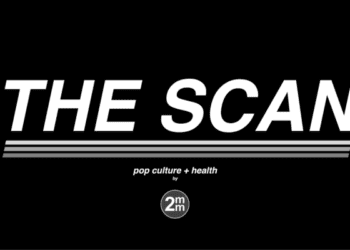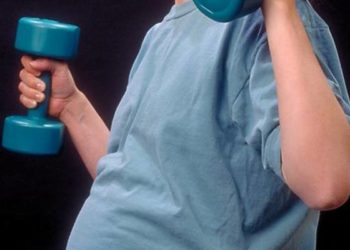Wellness Check: Exercise
Higher cardiorespiratory fitness may be protective against breast cancer in postmenopausal women
1. In this prospective cohort study, higher cardiorespiratory fitness (CRF) was associated with a substantially lower risk of breast cancer in postmenopausal women.
2. However, this protective effect of high CRF was only seen in those with overweight/obesity or a higher body fat percentage.
Evidence Rating Level: 2 (Good)
Several risk factors exist for developing breast cancer, especially in postmenopausal women. Cardiorespiratory fitness (CRF) represents a modifiable risk factor that may affect the risk of developing breast cancer. The evidence for CRF to reduce the incidence of breast cancer has not been well established. As a result, the objective of the present prospective study was to evaluate the association between CRF and invasive breast cancer in postmenopausal women.
The present study recruited 17,840 (median age= 60 years) cancer-free postmenopausal women who had a CRF assessment from the UK Biobank between 2006 and 2010. Participants were included if they had not had a menstrual period for >365 days, had a history of double oophorectomy, or had no other menstrual information available but were older than 55 years. Women were excluded if they had a personal history of cancer or mastectomy at baseline. Estimated CRF (eCRF) was assessed using a submaximal bicycle test and was classified as low (<20th percentile), moderate (20th to <80th percentile), and high (≥ 80th percentile). Statistical analyses were performed using regression models. The primary outcome was the time from baseline assessment to incident breast cancer diagnosis.
The results demonstrated that over a median follow-up of 11 years, 3% of women were diagnosed with invasive breast cancer. Patients with higher eCRF had a 24% lower risk of developing breast cancer than those with a low or moderate eCRF. However, it was found that this result was limited to those who were classified as having overweight/obesity. The study was limited by using a submaximal bicycle test to determine eCRF, rather than the gold standard: a maximal treadmill test with oxygen expiration capture. However, these results suggested that in certain populations, eCRF may decrease the incidence of breast cancer among postmenopausal women.
1. In this prospective cohort study, it was found that those with the highest levels of moderate-to-vigorous physical activity (MVPA) had the lowest risk of incident type 2 diabetes (T2DM), independent of genetic risk.
2. However, there was an additive interaction between MVPA and genetic risk, suggesting a greater effect of MVPA among those at a higher genetic risk for T2DM.
Evidence Rating Level: 2 (Good)
Physical activity remains a mainstay in the treatment of type 2 diabetes mellitus (T2DM). However, such recommendations have been founded mainly on self-reported measurements. Many patients may also be at higher genetic risk for developing T2DM, and the modification of this risk through exercise has not been studied. As a result, the objective of the present prospective cohort study was to examine the dose-response relationship between total and intensity-specific physical activity and incident T2DM while also accounting for genetic risk.
The present study recruited 59,325 (mean age=61.1, 44% male) patients without diabetes from 2013 to 2015. Patients were excluded if they had a diagnosis of diabetes, cardiovascular disease, or cancer before measurement with an accelerometer. The physical activity data were obtained using an accelerometer. Genetic risk was estimated using a polygenic risk score (PRS). Statistical analyses were performed using multivariable Cox proportional hazards models for incident T2DM according to categories of physical activity. The primary outcome was incident T2DM.
The results demonstrated that over a median follow-up of 6.8 years, there were 884 incident T2DM cases. Participants in the most active group had an 80% lower risk of incident T2DM than those who were the least active, independent of genetic risk. However, participants with a genetic risk for T2DM had the most significant absolute risk reduction for T2DM associated with MVPA. Despite these results, the study was limited by the lack of longitudinal patterns of physical activity, which may have limited evaluation of its long-term benefits. However, the present study has been the largest accelerometer-based dataset that found an association between physical activity levels and incident T2DM.
The use of combined hormonal contraceptives may not protect against musculoskeletal pathologies
1. In this systematic review, there was limited data to support the use of combined hormonal contraceptives (CHC) to prevent musculoskeletal conditions and injuries.
2. There was also low-certainty evidence to suggest that CHC use was associated with higher risks of future fracture and total knee arthroplasty.
Evidence Rating Level: 1 (Excellent)
It is known that women typically experience more musculoskeletal (MSK) pain and chronic MSK conditions compared to men. Some have postulated that these sex differences may be related to their menstrual status. Given that combined hormonal contraceptives (CHC) can stabilize menstruation, some have suggested that it may aid in alleviating MSK pathologies. Contrary to this, CHC use is often associated with reductions in peak bone mass and mineral density. Given that little is known on this subject, the objective of the present study was to assess the association between CHC use and various MSK pathologies.
Of 5,438 identified records, 50 (n=5,695,908 patients from 48 unique cohorts) studies were included from various databases from inception to April 2022. Studies were included if they assessed the association between CHC use and MSK pathology. Studies were excluded if participants had an underlying condition that could affect reproductive hormone levels, if only MSK performance was assessed, or if the study evaluated intrauterine devices or contraceptive methods that were estrogen-only or progestin-only. The study quality and risk of bias were assessed using the Downs and Black Quality Assessment Tool (DBQAT). The review was conducted in accordance with PRISMA guidelines. The primary outcome was the effect of CHC use on MSK pathology.
The results demonstrated that there was insufficient high-quality evidence to support the use of CHCs in the prevention of various soft tissue-related MSK pathologies. In addition, low-certainty evidence suggested that the use of CHCs may lead to higher future fractures and knee arthroplasties. Despite these results, the study was limited by the presence of missing data from some of the included studies, which may have affected the analysis. Nonetheless, the present study provided an update on the lack of evidence pertaining to the use of CHCs in various musculoskeletal pathologies.
1. In this prospective cohort study, those who met aerobic and strength training recommendations had a significantly lower risk of influenza and pneumonia mortality than those who met neither guideline.
2. As for muscle strengthening, compared to those who engaged in <2 episodes per week, those who engaged in 2 episodes of strength training had a lower risk of influenza and pneumonia mortality, while those with ≥ 7episodes/week had a higher risk.
Evidence Rating Level: 2 (Good)
The importance of physical activity may extend beyond cardiovascular, neurological, and cancer risk modification. In fact, studies have shown that regular physical activity may be protective against infectious diseases. Given that influenza and pneumonia represent a significant cause of death, the impact of physical activity on this mortality risk has a significant clinical interest. As a result, the objective of the present study was to describe the association between both aerobic and muscle-strengthening activity and the risk of mortality from influenza and pneumonia.
The present cohort study included 577,909 American participants (female = 52.2%) from the National Health Interview Survey from 1998-2018. Participants were excluded if they had an underlying condition, had ever smoked, had an abnormal body mass index (BMI), died within two years of their interview, or had missing physical activity or covariate data. Participants were classified based on whether they met the physical activity recommendation guidelines and were classified into one of five volume-based categories. Influenza and pneumonia mortality were identified through the 2019 National Death Index. Statistical analysis was performed using Cox proportional hazards models. The primary outcome was death from either influenza or pneumonia.
The results demonstrated that, over a median follow-up of 9.23 years, 1,516 deaths were attributed to pneumonia and influenza. Participants who met aerobic and muscle-strengthening physical activity guidelines had almost a 50% risk reduction in influenza and pneumonia mortality compared to those meeting neither guideline. As for muscle strengthening, those who engaged in 2 episodes per week had a lower mortality risk than those who engaged in <2 episodes/week. However, those who engaged in ≥7 episodes of muscle strengthening/week had an increased mortality risk. The present study was limited by the self-reported nature of the exposure data, which may have affected the results of the study. Despite this, the present study added additional evidence to suggest the importance of meeting the physical activity guidelines in reducing the risk of mortality for influenza and pneumonia.
Image: PD
©2023 2 Minute Medicine, Inc. All rights reserved. No works may be reproduced without expressed written consent from 2 Minute Medicine, Inc. Inquire about licensing here. No article should be construed as medical advice and is not intended as such by the authors or by 2 Minute Medicine, Inc.







